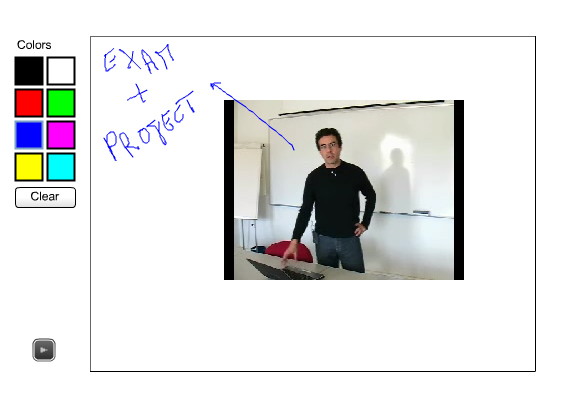mEmLearn
Tools for Storing, Retrieving, and Sharing Multimedia Learning Materials
mEmLearn: Tools for Storing, Retrieving, and Sharing Multimedia Learning Materials
About the Project
UPDATED (12 July 2010)
mEmLearn is a high education learning project by the Interactive Multimedia Group, at the Faculty of Sciences and Technology, at the Universidade Nova de Lisboa and funded by the Hewlett-Packard Technology for Teaching Grant Initiative 2006.
The project will continue as part of the Phd developed by Diogo Cabral, related to the UTAustin-Portugal Program, sub-program of Digital Media.
People
Principal Investigator: Professor Nuno Correia
Other: Diogo Cabral
Publications and Posters/Demos
Pen-based Video Annotations: a proposal and a prototype for Tablet PCs. Diogo Cabral, Nuno Correia. INTERACT 2009. Uppsala, Sweden. August 25-28 2009. (@googlebooks)
Mobile and Web Tools for Participative Learning. Diogo Cabral, Nuno Corrreia. IADIS, International Conference e-Learning 2007, Lisbon, Portugal, July 6-8 2007. (pdf)
An Enviromment for Mobile Learning Supporting Video Lectures and Annotations. Diogo Cabral, Nuno Correia. IADIS, International Conference Mobile Learning 2007, Lisbon, Portugal, July 5-7 2007. (Poster/Demo)
mEmLearn: Tools for Storing, Retrieving and Sharing Multimedia Learning Materials. 2007 HP Technology for Teaching Worldwide Higher Education Conference, Monterey, CA, USA, February 7-8, 2007. (Poster)
Summary
The project defines tools that enable students to augment the course materials in an interactive way, during or after the classes, to retrieve these materials at a later stage and to share them with other students or instructors. The traditional processes of annotating written materials will be extended by using technological support, in particular mobile wireless devices. During the class the instructor presents the class materials that can include slides, other images, audio or video sequences on simulations. The students are able to annotate these materials or illustrate the current topic of the class with their own materials, using the Tablet PCs.
At a later stage,
typically after the class, all these materials are integrated with the
overall video capture of the lecture. Each student can use its own
annotations or import the materials that were contributed by other
colleagues. This project benefits from results of a previous project (VideoStore) that implements video capture of
lectures and playback with integrated materials. The new proposal
allows to extend this concept by providing classroom support to the
collaborative annotation process.
The usage
of Tablet PCs for editing media elements was an extension to
the project and gives more ways to combine this technology with digital
multimedia.
Teaching and Learning Issues
The project addresses two major learning and teaching issues:
(1) How to transform a passive and experiential learning experience in an active process, participated by all students and instructors. Student contributions promote participation and reflexive thinking.
(2) How to provide an effective memory of what happens in a classroom setting, for later access and browsing. Most of the interactions that take place during a lecture or laboratory experiment are hard to record and later reproduce. By providing tools that support this process, the overall learning experience is improved.
Objectives
The project will have outcomes that are software tools but will also define a learning process based on these tools. The main outcomes are the following:
(1) Software tools that will allow the students to participate, annotate, and contribute during classes using Tablet PCs. The contributions will be time-stamped and added to a repository (server) for later retrieval and browsing. The annotations can be done with several media, using text, images, audio, and video.
(2) Software tools to browse the materials that were gathered during the class/lab experience. The instructor materials, including its own annotations, slides or other multimedia content will also be available and linked to each student’s contributions. These tools will be integrated with existing software developed in a funded project (VideoStore) to store/retrieve lectures captured on video and associated materials. These software tools will change the current learning paradigm and students will become more involved in classes as they can contribute and access others students contributions. Immediate access during class to materials related to the class will also benefit learning. After class students will have powerful tools to browse the contents of the lecture and, more important, their own view of what happened.
The evaluation of the project will be based on results and questionnaires initially applied to the Multimedia Computing course. The massive usage of Tablets PCs on class will indicate positive results of this project.
Quick Facts
Courses Impacted:
1) The course of Multimedia Computing it is offered to the fifth year students of the BSc degree and to the first year students of the MSc degree, both degrees in Computer Science Engineering. The technology and processes that will be implemented for this course are generic and can be applied to others. Software used: VideoStore System, Windows Journal.
Number of Students Impacted: 63
2) The course of Image Acquisition, Handling and Processing it is offered to the second year of the BSc degre in Conservation and Restoration in Arts. Digital images are very good to preview and study art restoration. Software used: Paint Shop Pro.
Number of Students Impacted: 25
3) Animation Workshop: activity related to the UTAustin-Portugal
Program, for a diverse audience. Some of the participants used the
Tablet PCs to draw the 2D animations. Software used: Adobe Flash
Number of Participants: 23
Number of Students Impacted (Total): 111
Number of Faculty Involved: 1
Developed Features
The first developed tools allow to draw on the Web with the Tablet PCs. This task is accomplish by using a C# application, the Web Ink/Drawing Control, embedded on the VideoStore system. New features were added to the original Web Ink/Drawing Control giving the possibility to draw over images.
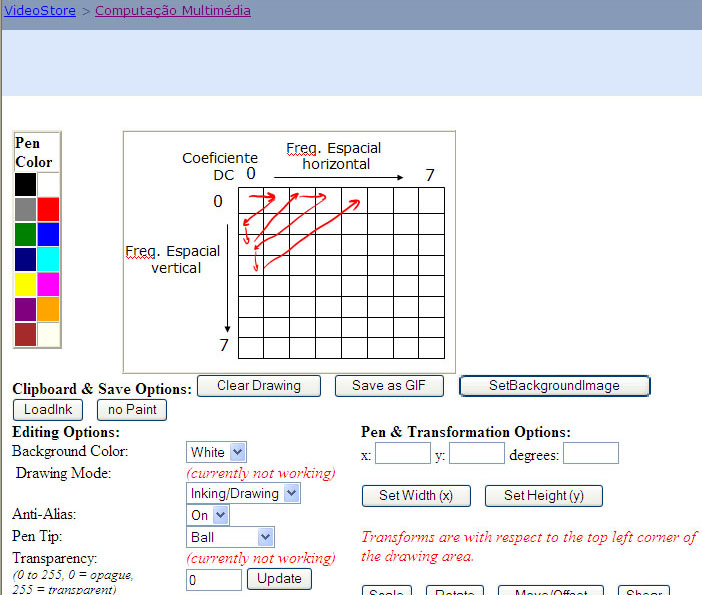
The previous image is a screenshot of the Web Ink/Drawing Control interface, with a red arrows drew over an image. The next image shows the drawn Ink and choosen image saved on the server and presented to the user afterwards.
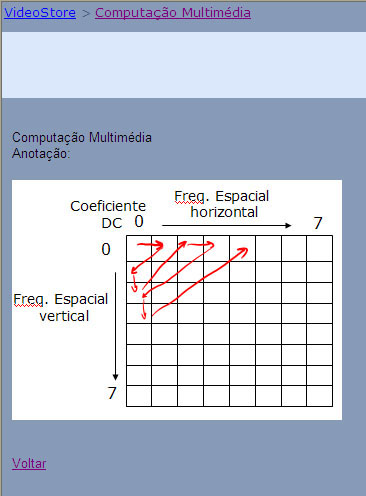
The most recent feature presents the ability to draw over a digital video. The previous C# application was quite limited for this aim. Therefore, it was decided to change the C# technology for the Adobe Flash CS3 technology. An initial prototype was concluded (see figure below) and can be accessed here
This prototype
is still under development and new features can seen on this video.
Students and Tablet PCs
The task given to the students of Multimedia Computing course for design a software interface with Tablet PCs was their first contact with this technology.
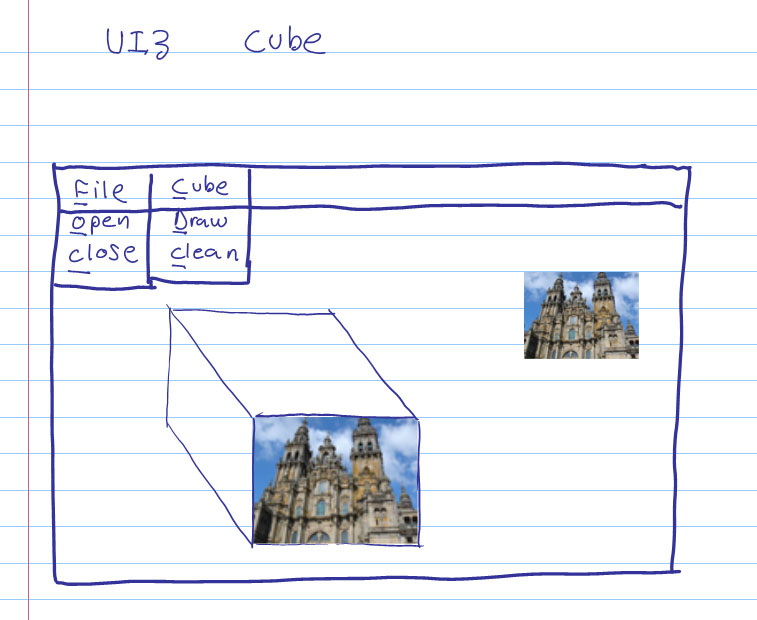
The previous and next images shows two different software interfaces drew by students using Windows Journal.
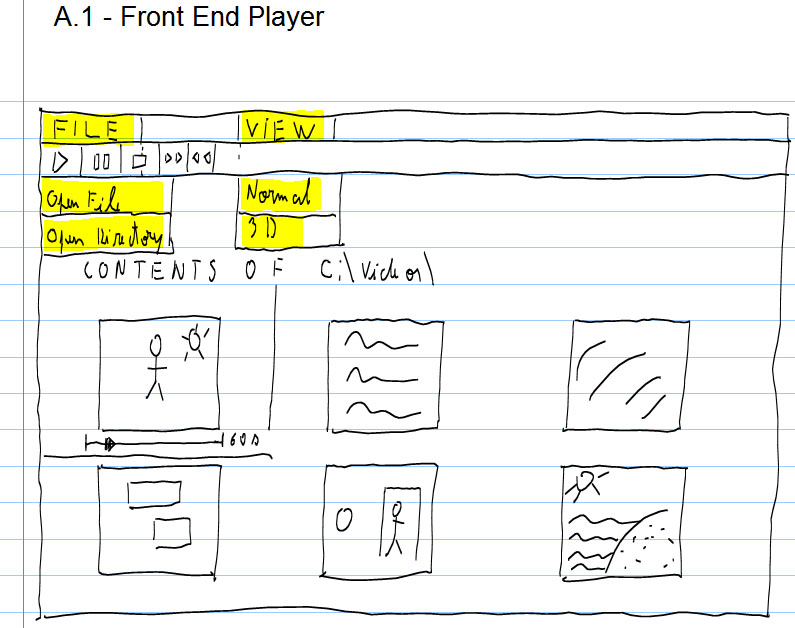
The students of the Image Acquisition, Handling and Processing course used the Paint Shop Pro software on the Tablet PCs to make image editing. The next image shows these students working with the Tablets on a classroom.
